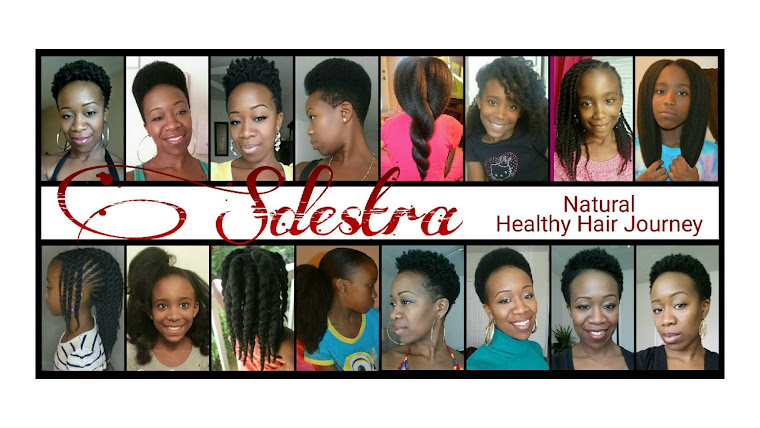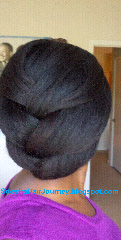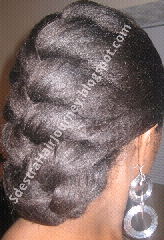 |
| Photo taken end of April 2012 |
*****************
Relaxing 4-6 weeks seems to be the norm for many relaxed women to get a touch-up, the new growth (NG) that is... The average growth of hair for many of us happens to be half an inch per month. If you calculate this with the amount of 4-6 weeks of getting a touch-up, there is not much NG to relax. Most likely there will be overlapping of the relaxer which can cause a slew of things that can deteriorate the health of the hair. We are talking about dry, brittle, breakage, thin and over processed hair.
Remember that the new growth is stronger than the relaxed hair because it is "virgin" (without any chemical treatment). The area where the relaxed hair and natural hair meets is called the Line of Demarcation (or Demarcation Line) and happens to be the weakest. Without the proper care of the two textures combined, the hair can easily break off in that area causing short hairs to stick out every which way.
Stretching is a great way to alleviate the above mentioned issues. Maximizing the amount of time between touch-ups can benefit many. The more NG there is, the more one can see where the relaxer should be applied during the next touch-up session. This means the less experience of overlapping, over processed hair and much thicker hair. Always remember that you will be dealing with two different hair textures. To some it will be frustrating and to some it will be a breeze to manage. Be prepared and embrace the process along the way.
A good thing sometimes can be a bad thing for some. Stretching may not work for everyone. Some experience more shedding, severe breakage and the hair tangles a lot, causing knots. When that happens, it is an indication that stretching is not working.
Moisture is extremely important during the time between touch-ups...anytime. Co-washes (washing the hair with a moisturizing conditioner), Prepoos (oil treatment) and deep conditioning will keep the hair manageable and soft.
Protein treatments are extremely important to balance the hair's strength with the moisture. This can be done on a monthly basis to ensure that the hair is strong enough to withstand the stretching. Be cautious with the amount of protein that is used. Too much of protein can cause the hair to feel dry and cause the hair to break. Using a moisturizing conditioner afterwards will keep everything balanced and it is a must.
Protective styling and low manipulation is a great way to maintain the hair during stretches. The less the hair is messed with, the less breakage and stress to the hair strands. Some protective styles that can help during stretches are braids, weaves, buns, roller sets, rod sets, etc. Braid outs works great too and the advantage of this is because the NG and the processed hair blends well together. This in turn also lessens the amount of tangling.
Here are some tips has helped me during my stretch:
- I pre-poo before wash day by oiling my scalp and NG, put on a plastic cap and satin scarf overnight.
- Use a wide tooth comb to detangle with conditioner while sectioning the hair.
- Protein treatments are done monthly to reinforce the strength of my hair.
- I do a black tea rinse every so often to slow down the shedding.
- Moisturize, moisturize, moisturize. I use either diluted conditioner mixed with coconut oil to spray my NG or Herbal Essence's Long Term Relationship Leave In.
- I wash my hair in sections in the shower, wash each one using my fingers in a downward motion to free the shed hair and to keep the hair from re-tangling.
- I co-wash more than I shampoo, shampooing can be drying if done too often.
- I deep condition with a moisturizing conditioner and oil after shampooing.
- Protective styling is a must for me because it keeps my hands out of my hair every day.
- Patience - without it, I would not be able to go through this stretch and cause more damage to my hair.
Hope some of these things help you during your stretch. What are tips that you can also share, what experiences have you encountered that you learned from?
Thanks for reading and God bless!




